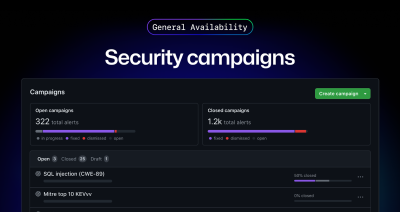
How to catch GitHub Actions workflow injections before attackers do
Strengthen your repositories against actions workflow injections — one of the most common vulnerabilities.

Resources for securing your supply chain, building more secure applications, and staying up-to-date with the latest vulnerability research. Get comprehensive insights into the latest security trends—and news from the GitHub Security Lab. You can also check out our documentation on code security on GitHub to find out how to keep your code and applications safe.

Strengthen your repositories against actions workflow injections — one of the most common vulnerabilities.


Discover how to increase the coverage of your CodeQL CORS security by modeling developer headers and frameworks.

DjVuLibre has a vulnerability that could enable an attacker to gain code execution on a Linux Desktop system when the user tries to open a crafted document.

The GitHub dependency graph maps every direct and transitive dependency in your project, so you can identify risks, prioritize fixes, and keep your code secure.

Use these insights to automate software security (where possible) to keep your projects safe.

Dive into the novel security challenges AI introduces with the open source game that over 10,000 developers have used to sharpen their skills.

DNS rebinding attack without CORS against local network web applications. Explore the topic further and see how it can be used to exploit vulnerabilities in the real-world.

Maintaining and developing complex and risky code is never easy. See how we addressed the challenges of securing our SAML implementation with this behind-the-scenes look at building trust in our systems.

In this post, I’ll look at CVE-2025-0072, a vulnerability in the Arm Mali GPU, and show how it can be exploited to gain kernel code execution even when Memory Tagging Extension (MTE) is enabled.

This May marks the fifth annual Maintainer Month, and there are lots of treats in store: new badges, special discounts, events with experts, and more.

Learn how to effectively prioritize alerts using severity (CVSS), exploitation likelihood (EPSS), and repository properties, so you can focus on the most critical vulnerabilities first.

Security should be native to your workflow, not a painful separate process.

Learn how to identify which CVE Numbering Authority is responsible for the record, how to contact them, and what to include with your suggestion.

Starting today, security campaigns are generally available for all GitHub Advanced Security and GitHub Code Security customers—helping organizations take control of their security debt and manage risk by unlocking collaboration between developers and security teams.

What is CORS and how can a CORS misconfiguration lead to security issues? In this blog post, we’ll describe some common CORS issues as well as how you can find and fix them.

Every minute, GitHub blocks several secrets with push protection—but secret leaks still remain one of the most common causes of security incidents. Learn how GitHub is making it easier to protect yourself from exposed secrets, including today’s launches of standalone Secret Protection, org-wide scanning, and better access for teams of all sizes.

A step-by-step guide for open source maintainers on how to handle vulnerability reports confidently from the start.

Critical authentication bypass vulnerabilities (CVE-2025-25291 + CVE-2025-25292) were discovered in ruby-saml up to version 1.17.0. In this blog post, we’ll shed light on how these vulnerabilities that rely on a parser differential were uncovered.

Treating exposures as full and complete can help you respond more effectively to focus on what truly matters: securing systems, protecting sensitive data, and maintaining the trust of stakeholders.
Build what’s next on GitHub, the place for anyone from anywhere to build anything.
Last chance: Save $700 on your IRL pass to Universe and join us on Oct. 28-29 in San Francisco.